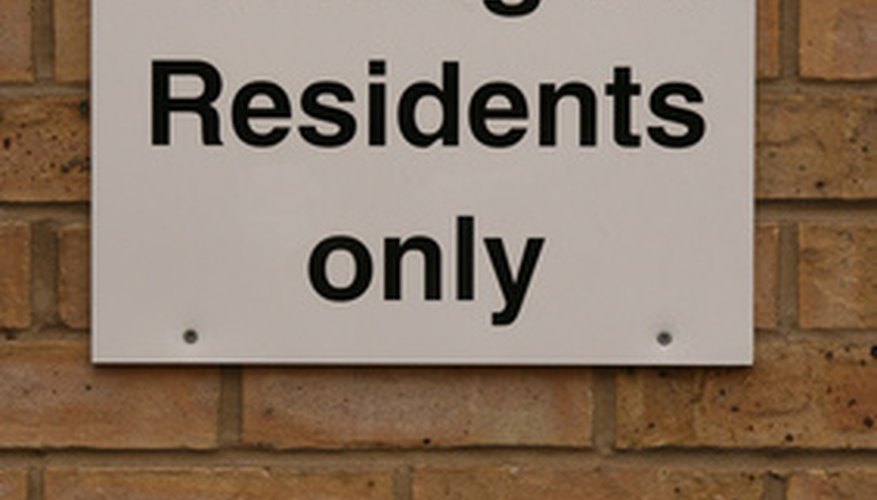Parking is an ever-growing problem in most parts of the United Kingdom, especially in big cities where parking spaces are scarce. Residential parking permits are one of many schemes run by local authorities nationwide to alleviate congestion and give local residents priority to park their vehicles closer to home. If you live in a controlled parking zone, you may be able to obtain a resident parking permit.
Ascertain your eligibility. Before applying for a resident parking permit in the UK, you need to ensure that you qualify for one. Eligibility criteria differ from district to district but generally you need to be a permanent resident in that borough to be considered for a permit. Ensure that your vehicle is registered to your address. Some properties--known as permit-free housing developments-- are not entitled to parking permits at all and vehicles measuring over 7 foot 6 inches do not qualify for a residential parking permit.
- Parking is an ever-growing problem in most parts of the United Kingdom, especially in big cities where parking spaces are scarce.
- Eligibility criteria differ from district to district but generally you need to be a permanent resident in that borough to be considered for a permit.
To avoid rejection, you will need to have available all the documentary evidence proving your eligibility. Contact your bank and other service providers, such as the gas, electricity and phone companies, to change your address on the bills you receive. If you hold a UK driver's license, ensure that the address on it is changed. These will be needed as proof of residency. Note that some boroughs apply strict criteria when considering parking permit applications. In some areas, if you have three or more unpaid parking fines your application for a permit will be rejected.
Apply to your borough's parking office. When you move to a new area where parking is controlled, contact your local council and ask for a parking permit application form. Some local authorities have application forms ready to download from their websites, so check to see if this option is available to you. Complete the form and return it, either in person or by post, along with the required proof of address. You will normally be asked to supply a recent bank statement or utility bill together with one other proof such as a driver's license or tenancy agreement. You will also need to prove that you are the registered keeper of the vehicle by supplying your vehicle registration certificate, which must be in your new address as well.
- To avoid rejection, you will need to have available all the documentary evidence proving your eligibility.
- You will also need to prove that you are the registered keeper of the vehicle by supplying your vehicle registration certificate, which must be in your new address as well.
